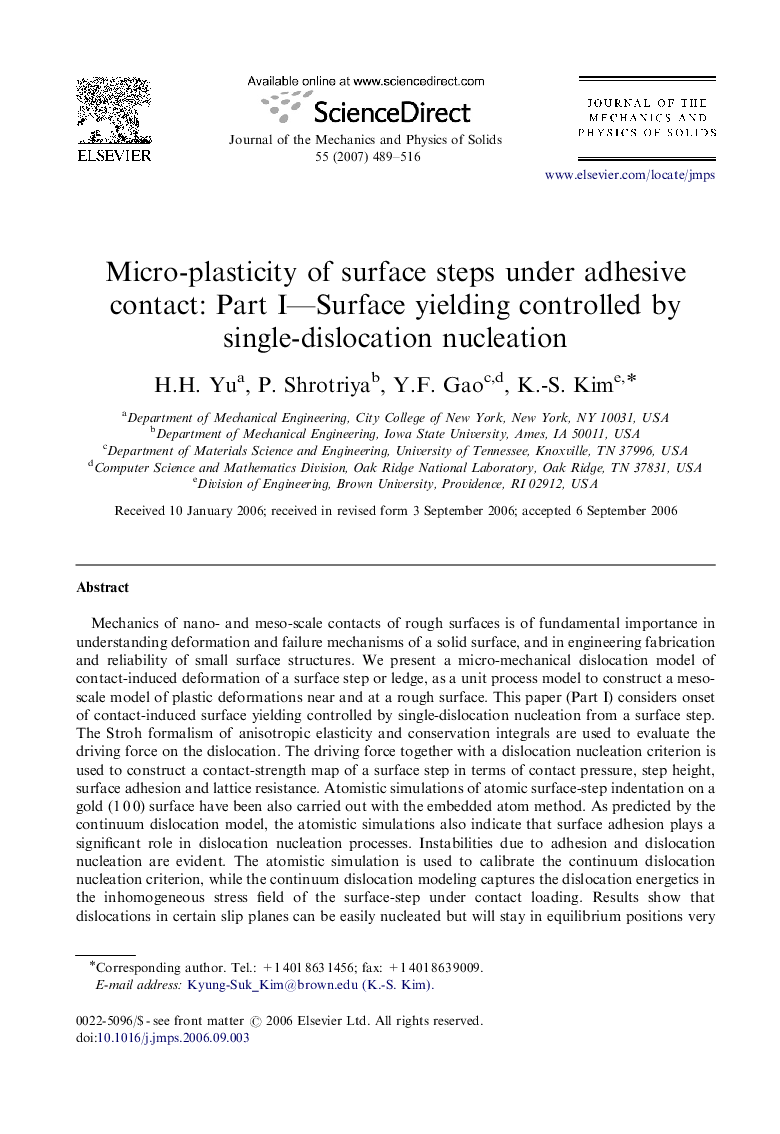| کد مقاله | کد نشریه | سال انتشار | مقاله انگلیسی | نسخه تمام متن |
|---|---|---|---|---|
| 797533 | 1467163 | 2007 | 28 صفحه PDF | دانلود رایگان |

Mechanics of nano- and meso-scale contacts of rough surfaces is of fundamental importance in understanding deformation and failure mechanisms of a solid surface, and in engineering fabrication and reliability of small surface structures. We present a micro-mechanical dislocation model of contact-induced deformation of a surface step or ledge, as a unit process model to construct a meso-scale model of plastic deformations near and at a rough surface. This paper (Part I) considers onset of contact-induced surface yielding controlled by single-dislocation nucleation from a surface step. The Stroh formalism of anisotropic elasticity and conservation integrals are used to evaluate the driving force on the dislocation. The driving force together with a dislocation nucleation criterion is used to construct a contact-strength map of a surface step in terms of contact pressure, step height, surface adhesion and lattice resistance. Atomistic simulations of atomic surface-step indentation on a gold (1 0 0) surface have been also carried out with the embedded atom method. As predicted by the continuum dislocation model, the atomistic simulations also indicate that surface adhesion plays a significant role in dislocation nucleation processes. Instabilities due to adhesion and dislocation nucleation are evident. The atomistic simulation is used to calibrate the continuum dislocation nucleation criterion, while the continuum dislocation modeling captures the dislocation energetics in the inhomogeneous stress field of the surface-step under contact loading. Results show that dislocations in certain slip planes can be easily nucleated but will stay in equilibrium positions very close to the surface step, while dislocations in some other slip planes easily move away from the surface into the bulk. This phenomenon is called contact-induced near-surface dislocation segregation. As a consequence, we predict the existence of a thin tensile-stress sub-layer adjacent to the surface within the boundary layer of near-surface plastic deformation. In the companion paper (Part II), we analyze the surface hardening behavior caused by multiple dislocations.
Journal: Journal of the Mechanics and Physics of Solids - Volume 55, Issue 3, March 2007, Pages 489–516